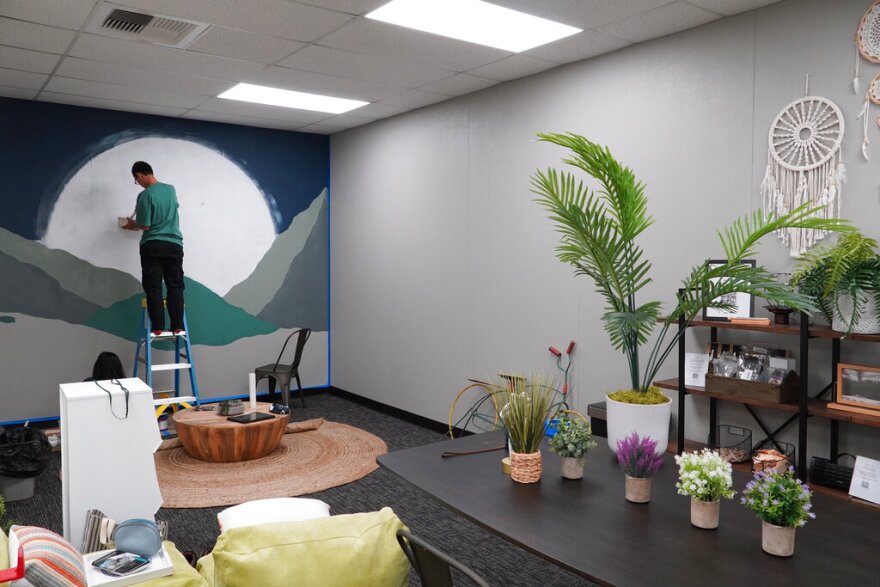A group of Kentucky students convened 10 panels across the state to listen to their fellow students’ concerns around mental health, and the results were clear. Troubling trends are only continuing, even as classes return to something resembling normalcy.
Logan Justice, a recent Dunbar High School graduate, was part of the group. He said opening up the conversation is key.
"When students can get together and talk about what they're feeling and how they're going through that, they learn a lot more," he said.
The result was a series of recommendations: providing comprehensive suicide prevention with trained counselors, allowing six excused mental health days, expanding treatment and resources, and working mental health into the education process. That would include educating teachers and staff.
From a pandemic to the impacts of multiple natural disasters and the challenges of daily life, Kentucky's students deserve to have their mental health prioritized. This administration is committed to making progress to offer our students mental health support and services. 1/2 pic.twitter.com/fMQIyUloRt
— Lt. Governor Jacqueline Coleman (@LtGovColeman) August 16, 2022
Asked if the initiative might place too much pressure on already overwhelmed teachers, lieutenant governor Jacqueline Coleman, an educator herself, had this to say: "We don't have the luxury of not teaching the whole child anymore," she responded. "This is not about teachers becoming mental health clinicians. It's about teachers recognizing warning signs."
Whether any of the recommendations will find their way into legislation in 2023 remains to be seen.Youth mental health is in crisis. Are schools doing enough?

By JOCELYN GECKER and DYLAN LOVAN, Associated Press
For fourth-grader Leah Rainey, the school day now begins with what her teacher calls an “emotional check-in.”
“It’s great to see you. How are you feeling?” chirps a cheery voice on her laptop screen. It asks her to click an emoji matching her state of mind: Happy. Sad. Worried. Angry. Frustrated. Calm. Silly. Tired.
Depending on the answer, Leah, 9, gets advice from a cartoon avatar on managing her mood and a few more questions: Have you eaten breakfast? Are you hurt or sick? Is everything OK at home? Is someone at school being unkind? Today, Leah chooses “silly,” but says she struggled with sadness during online learning.
At Lakewood Elementary School, all 420 students will start their days the same way this year. The rural Kentucky school is one of thousands across the country using the technology to screen students’ state of mind and alert teachers to anyone struggling.
In some ways, this year’s back-to-school season will restore a degree of pre-pandemic normalcy: Most districts have lifted mask mandates, dropped COVID vaccine requirements and ended rules on social distancing and quarantines.
But many of the pandemic’s longer-lasting impacts remain a troubling reality for schools. Among them: the harmful effects of isolation and remote learning on children’s emotional well-being.
Student mental health reached crisis levels last year, and the pressure on schools to figure out solutions has never been greater. Districts across the country are using federal pandemic money to hire more mental health specialists, rolling out new coping tools and expanding curriculum that prioritizes emotional health.
Still, some parents don’t believe schools should be involved in mental health at all. So-called social-emotional learning, or SEL, has become the latest political flashpoint, with conservatives saying schools use it to promote progressive ideas about race, gender and sexuality, or that a focus on well-being takes attention from academics.
But at schools like Lakewood, educators say helping students manage emotions and stress will benefit them in the classroom and throughout life.
The school, in a farming community an hour’s drive south of Louisville, has used federal money to create “take-a-break” corners in each classroom. Students can rifle through a “self-regulation kit” with tips on deep breathing, squishy stress balls and acupuncture rings, said school counselor Shelly Kerr. The school plans to build a “Reset Room” this fall, part of an emerging national trend to create campus sanctuaries where students can go to decompress and speak with a counselor.
The online student screener Lakewood uses, called Closegap, helps teachers identify shy, quiet kids who might need to talk and would have otherwise gone unnoticed.
Closegap founder Rachel Miller launched the online platform in 2019 with a few schools and saw interest explode after the pandemic hit. This year, she said, more than 3,600 U.S schools will be using the technology, which has free and premium versions.
“We are finally beginning to recognize that school is more than just teaching the kids reading, writing and arithmetic,” said Dan Domenech, executive director of the national School Superintendents Association. Just as free lunch programs are based on the idea that a hungry child can’t learn, more and more schools are embracing the idea that a cluttered or troubled mind cannot focus on schoolwork, he said.
The pandemic magnified the fragility of mental health among American youth, who had been experiencing a rise in depression, anxiety and suicidal thoughts for years, experts say. A recent report issued by the Centers for Disease Control and Prevention found 44% of high school students said they experienced ” persistent feelings of sadness or hopelessness ” during the pandemic, with girls and LGBTQ youth reporting the highest levels of poor mental health and suicide attempts.
If a silver lining exists, the pandemic raised awareness of the crisis and helped de-stigmatize talking about mental health, while also bringing attention to schools’ shortcomings in handling it. President Joe Biden’s administration recently announced over $500 million to expand mental health services in the country’s schools, adding to federal and state money that has poured into schools to cope with pandemic-era needs.



